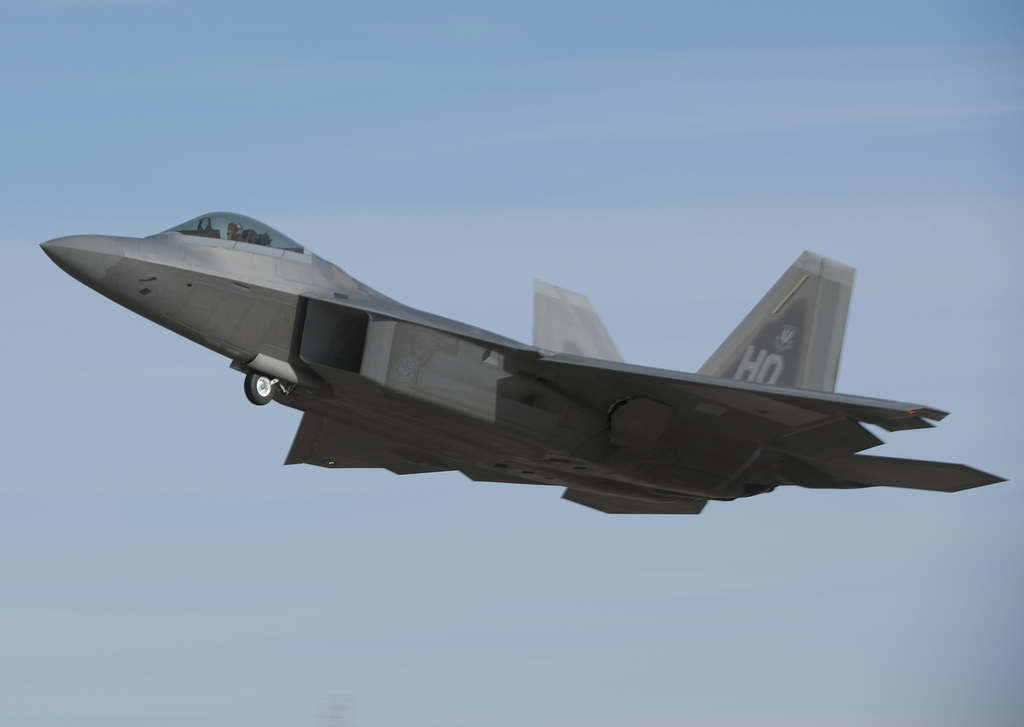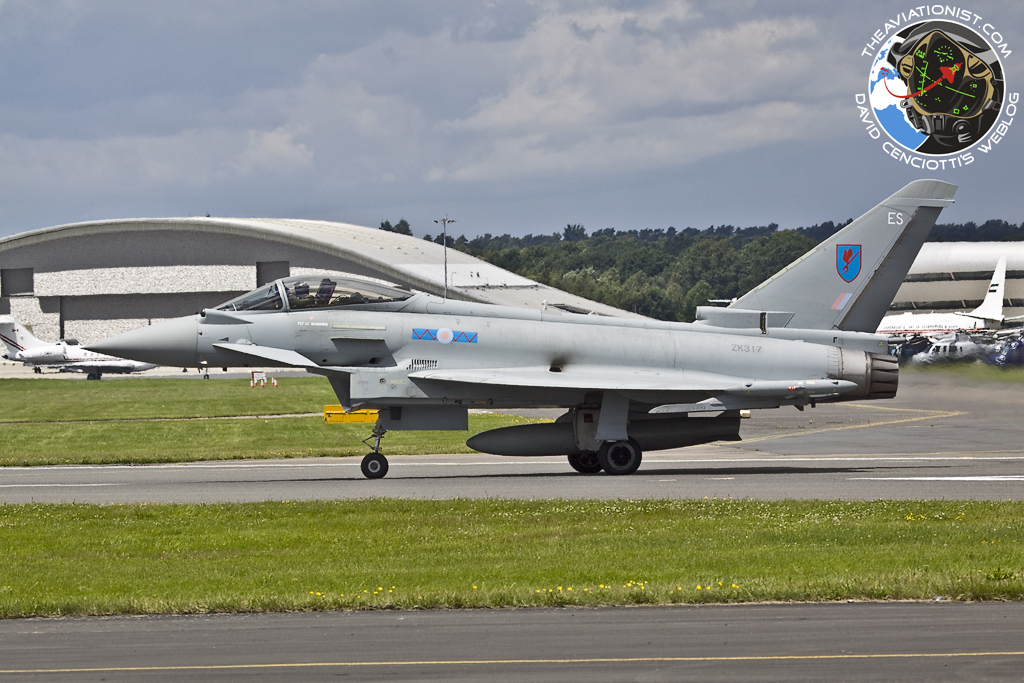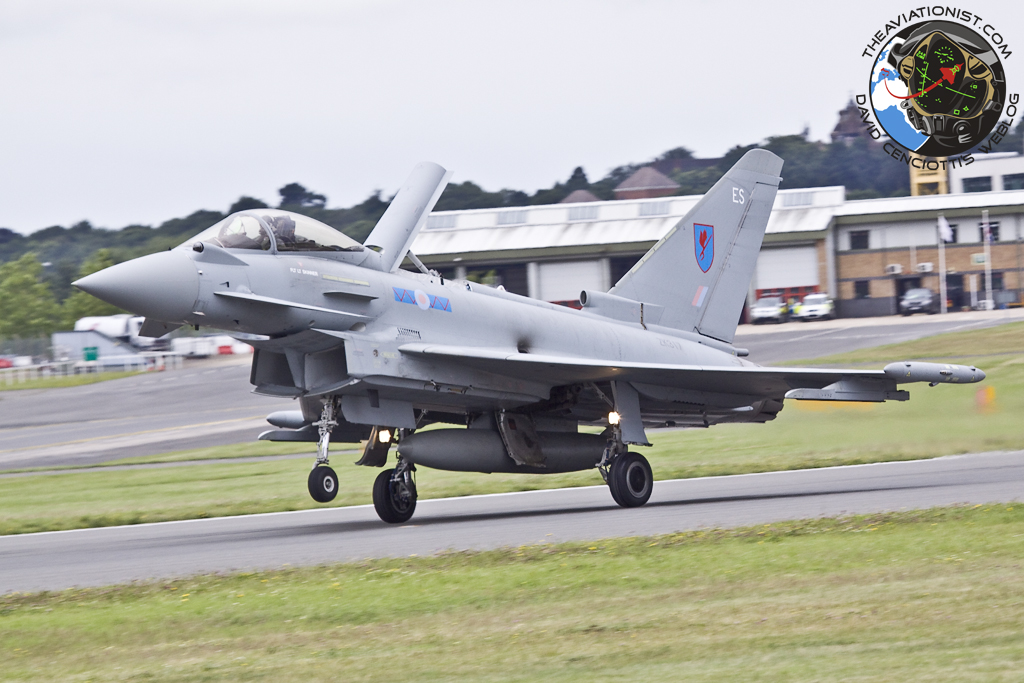Here below you will find the Top 5 blog posts of year 2012.
Actually, these are not the five articles that got most pageviews: in fact, among the most read ones, I’ve picked those that might be used to characterize the year and ordered them chronologically so as to give readers the opportunity to virtually review the year that is coming to an end based on what was posted by The Aviationist.
Unfortunately a lot of topics that were covered in 2012 don’t appear in this selection including Syria uprising, Israel offensive in Gaza, Korean peninsula crisis, Turkish Air Force Phantom shot down in Syria, nEUROn, Iranian UAVs, X-47B and other U.S. drones. Use the search feature or select the proper category/tag to read all what was written throughout the year.
1) Exclusive: What nobody else will tell you about the U.S. F-22 stealth fighters deployed near Iran
Posted on Apr. 30
The news that multiple F-22 stealth fighters were deployed “near Iran” has already been reported by the most important media outlets all around the world.
However, nobody has been able to provide some important details that could be useful to better understand the scope of this overseas deployment: when did the Raptors deploy? How many aircraft were deployed? Where?
And, above all, are those plane capable to perform strike missions in addition to the standard air-to-air sorties?
Thanks to the information provided by several sources, The Aviationist is able to fill the gaps, provide a more accurate view of the deployment and debunk some myths that fueled the media hype.
The six F-22 Raptors currently at Al Dhafra, UAE, belong to the 49th Fighter Wing, based at Holloman AFB, New Mexico. They flew as “Mazda 91″ to Moron, Spain, on Apr. 17 and departed again for their final destination on Apr. 20.
Since they spent some 4 days in Spain, during their stay, the stealthy planes were photographed by several local spotters that were able to provide the exact list of all the examples involved in the deployment:
#04-4078, #04-4081, #05-4093, #05-4094, #05-4098, #05-4099.
If they were not willing to let the world know of such deployment they would not make a stopover in Spain, during daylight.
They are all Block 3.0 (or Block 30) examples meaning that neither of them has received the latest upgrade (Block 3.1) that has brought the capability to find and engage ground targets using the Synthetic Aperture Radar mapping and eight GBU-39 SDBs (Small Diameter Bombs) to the troubled stealthy fighter.
Therefore they are hardly involved in any build-up process in the region, since their role in case of war on Iran would be limited to the air-to-air arena: mainly fighter sweep (missions with the aim to seek out and destroy enemy aircraft prior to the arrival of the strike package), HVAA (High Value Air Asset) escort and DCA (Defensive Counter Air).
Image credit: U.S. Air Force
Considered the limited effectiveness of the Iranian Air Force, it is much more likely that the F-22s involved in any kind of attack on Iran would be those of the 3rd Fighter Wing, based at Joint Base Elmendorf-Richardson, in Alaska, that was the first U.S. Air Force unit to receive the Block 3.1 planes and has already started training in the air-to-surface role.
Furthermore, the deployment is among those scheduled several month in advance and this is not the first time the F-22 deploys in the United Arab Emirates. In November 2009, some 1st Fighter Wing’s Raptors from Langley AFB, flew to Al Dhafra, to train with the French Air Force Rafales and the RAF Typhoons during exercise ATLC 2009. The episode is quite famous because in late December of the same year the French Ministry of Defense released the captures taken by the Rafale’s OSF (Optronique Secteur Frontal) showing an F-22 in aerial combat. In fact, although the U.S. Air Force pilots told that their plane was undefeated during the exercise, the French were killed once in six 1 vs 1 WVR (Within Visual Range) engagements versus the F-22 (the other 5 ended with a “draw”) and one Raptor was claimed as killed by a UAE Mirage 2000 during a mock engagement.
Here’s the famous capture released at the time and published for the first time by Air & Cosmos magazine.
Image credit: French MoD via Air & Cosmos
2) The mysterious U.S. F-15E Strike Eagle detachment in Djibouti. Are they conducting covert air strikes in Yemen?
Posted on May 11
Although their presence over there is not a secret (since it was announced about 10 years ago and you can see some by simply pointing Google Earth on Djibouti International Airport, as done in this interesting OSGEOINT analysis) what’s still unclear is what eight U.S. F-15Es are currently doing in the Horn of Africa.
They are reportedly serving in support of Combined Joint Task Force – Horn of Africa, as an Expeditionary Squadron of the 380th Expeditionary Operations Group, based at Al Dhafra, in the United Arab Emirates, and responsible for the “war on terror” in the region, but what’s their actual mission remains a (sort-of) mystery.
Little information can be found on official sources: among the press releases of the Task Force you will only find a news about the change of command that took place on May 6. It confirms what we already know: previous detachment was provided by the U.S. Air Force in Europe’s 48th Fighter Wing through the 492nd Expeditionary Fighter Squadron, from RAF Lakenheath in the UK, and the new one, the 336th Expeditionary Fighter Squadron, is provided by the 4th FW from Seymour Jonhnson AFB, NC.
By the way, the Strike Eagles recently spotted at Moron airbase, Spain, were on their ferry flight to Camp Lemonnier and not to Afghanistan (as initially believed).
Image credit: Air Force
Even if the American military presence across the world is usually very well advertised, the U.S. keep a low profile on the operations launched by the Air Force’s Strike Eagles from Eastern Africa.
The reason for such prudence maybe that, along with the Reaper drones, even the F-15Es are conducting air strikes in Yemen (and Somalia).
Indeed, counter terrorism operations with attacks aimed at Al Qaeda in the Arabian Peninsula, including drone strikes but also naval bombardments, cruise missiles and air strikes, have increased a lot in the last years: the most recent air strikes brought the 2012 total to more than 15, about as many in the previous 10 years combined.
Some of the air strikes in Yemen were reportedly launched with the support of warplanes believed to be Yemeni Air Force ones. But there are also chances that U.S. conventional planes have been involved in air-to-surface operations officially or unofficially credited to the Yemeni government.
As happened on Mar. 11, 2012, when local residents reported that planes bombarded the town and a senior Yemeni official confirmed the U.S. inolvement by saying that “The U.S. did not inform us on the attacks. We only knew about this after the U.S. attacked” to the CNN; or on Mar. 18, when an air strike was claimed by the Yemeni government, even if the local Air Force was unable to launch an aerial bombardment as most of its personnel was on strike.
Air strikes with conventional planes are considered less respectful of the local nation’s sovereignity than drones’ attacks and this could be the reason for keeping the eventual F-15E involvement in the area a bit confidential.
Robots can silently fly for several hours and use their few missiles/bombs when needed. That’s why drones are the weapon of choice to fight Qaeda in Yemen.
However, when you need to quickly reach a distant target and hit it with a considerable payload, you might find a Strike Eagle a better platform to undertake the task.
H/T to Guido Olimpio for providing some of the links you can find in the article.
3) Farnborough 2012: “Yesterday we had Raptor salad for lunch” Typhoon pilot said after dogfighting with the F-22 at Red Flag Alaska
Posted on Jul. 13
Although a Royal Air Force Typhoon took part to the daily air display, the most interesting thing at Farnborough International Airshow 2012 was the opportunity to get some more details about the recent participation of the German Air Force Eurofighter Typhoons to the Red Flag.
In fact the last Red Flag-Alaska saw the first attendance by both the U.S. Air Force’s F-22 Raptors and German Air Force Eurofighter Typhoons.
As we have already reported, the Typhoons and the Raptor had the opportunity engage each other in dissimilar air combat training but only a part of the story about the outcome of the mock engagements has been reported so far: the one about the German commander saying that the F-22’s capabilities are “overwhelming,” a statement that, according to Eurofighter sources, was taken out of context.
Indeed, Typhoon pilots at Farnborough said that, when flying without their external fuel tanks, in the WVR (Within Visual Range) arena, the Eurofighter not only held its own, but proved to be better than the Raptor.
Indeed, it looks like the F-22 tends to lose too much energy when using thrust vectoring (TV): TV can be useful to enable a rapid direction change without losing sight of the adversary but, unless the Raptor can manage to immediately get in the proper position to score a kill, the energy it loses makes the then slow moving stealth combat plane quite vulnerable.
This would be coherent by analysis made in the past according to which the TV it’s not worth the energy cost unless the fighter is in the post stall regime, especially in the era of High Off Bore Sight and Helmet Mounted Display (features that the F-22 lacks).
Obviously, U.S. fighter pilots could argue that, flying a stealthy plane they will never need to engage an enemy in WVR dogfight, proving that, as already explained several times, kills and HUD captures scored during air combat training are not particularly interesting unless the actual Rules Of Engagement (ROE) and the training scenario are known.
However, not all the modern and future scenarios envisage BVR (Beyond Visual Range) engagements and the risk of coming to close range 1 vs 1 (or 2 vs 2, 3 vs 3 etc) is still high, especially considered that the F-22 currently uses AIM-120 AMRAAM missiles, whose maximum range is around 100 km (below the Meteor missile used by the Typhoon).
Moreover, at a distance of about 50 km the Typhoon IRST (Infra-Red Search and Track) system is capable to find even a stealthy plane “especially if it is large and hot, like the F-22″ a Eurofighter pilot said.
Anyway, the Typhoons scored several Raptor kills during the Red Flag Alaska. On one day a German pilot, recounting a succesfull mission ironically commented: “yesterday, we have had a Raptor salad for lunch.”
Above images (credit: The Aviationist’s photographer Giovanni Maduli) show the Typhoon at Farnborough International Airshow 2012.
[Read also the follow up post: F-22 Raptor kill markings shown off by German Eurofighter Typhoons. “The F-22 is not invincible” saga continues.]
4) Marine Attack Squadron loses eight Harrier jets in worst U.S. air loss in one day since the Vietnam War
Posted on Sept. 16
On Friday Sept. 14, at around 10.15 p.m. local time, a force of Taliban gunmen attacked Camp Bastion, in Helmand Province, the main strategic base in southwestern Afghanistan.
About 15 insurgents (19 according to some reports), wearing U.S. Army uniforms, organized into three teams, breached the perimeter fence and launched an assault on the airfield, that includes the U.S. Camp Leatherneck and the UK’s Camp Bastion, where British royal Prince Harry, an AH-64 Apache pilot (initially believed to be the main target of the attack) is stationed.
The attackers fired machine guns, rocket propelled grenades and possibly mortars against aircraft parked next to the airport’s runway. Two U.S. Marines were killed in the subsequent fighting whereas eight of 10 AV-8B+ Harrier jets of the Yuma-based Marine Attack Squadron (VMA) 211 were destroyed (6) or heavily damaged (2): the worst U.S. air loss in one day since the Vietnam War.
The VMA-211 “Avengers” is part of the 3rd Marine Aircraft Wing headquartered in San Diego at Marine Corps Air Station Miramar. It deployed to Afghanistan in April and relocated from Kandahar Airfield to Camp Bastion on Jul. 1.
According to Wikipedia, the VMA-211 last suffered this level of losses on Dec. 8, 1941.
Considered that the U.S. Marine Corps are believed to be equipped with slightly more than 120 AV-8B+, the attack on Camp Bastion has wiped out 1/15th of the entire U.S. Jump Jet fleet and a large slice of the Yuma-based squadron. A serious problem for the USMC, that was compelled to buy second hand RAF Harrier GR9s to keep the AV-8B+ in service beyond 2030, when it will be replaced by the F-35B.
Furthermore, the VMA-211 was the only Marine Harrier unit in Afghanistan: until the destroyed airframes will be replaced (most probably, by another Squadron), the coalition ground forces can’t count on the CAS (Close Air Support) provided by the Harrier.
Tom Meyer has contributed to this post.
Image credit: U.S. Marine Corps
5) China unveils its brand new stealth fighter: the J-31 “Falcon Eagle”. But it’s a copy of the F-22 Raptor
Posted on Sept. 16
Pictures of a previously unknown brand new fighter jet have started to appear online over the weekend.
Built by the Shenyang company, the new aircraft, could be the answer of the aerospace firm to the Chengdu J-20, whose two prototypes have already become quite famous across the world since the first images of the large, short-take off and landing stealth plane, leaked on the Chinese defense forums about two years ago.
Image credit: Tixue.net
The new aircraft, coded 31001 (hence, believed to be designated J-31) it’s a sort of copy of the F-22 Raptor the most advanced (and troubled), (multi-role) fighter jet in the U.S. Air Force inventory: same nose section, same twin tails and trapezoidal wings along with the distinctive lines of the stealth design. Anyway, even if it has two engines, the new aircraft doesn’t seem to feature thrust vectoring capabilities. At least on this first prototype.
It has also some F-35-like features, as the air intakes and wings dimensions.
The J-31 is smaller than the J-20, from which it differs for the grey paint job and the presence of a colored emblem on the tails (in place of the typical red star) with the text 鹘鹰, Chinese for “Falcon Eagle”
Image credit: Tixue.net
Although it’s almost impossible to say whether the new aircraft will eventually reach production phase, for sure it proves that China has at least two stealth projects for future combat capable aircraft.
Considered all the cyber attacks targeting Lockheed Martin stealth projects in the last years, one could believe Chinese hackers were able to put their hands on some useful technical drawings of the Raptor. Still, it would be the avionics, radar-evading features, equipment and weapons, rather than the shape, to make the difference in a dogfight. Unless the Chinese will build some thousand examples such jets.













